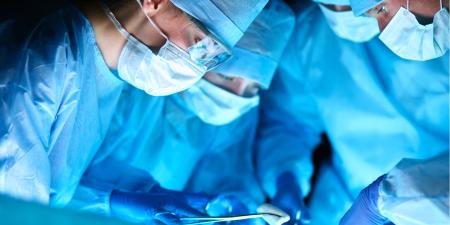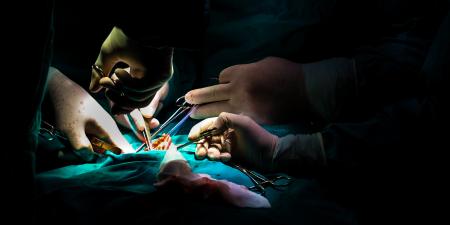The FDA ensures the safety and efficacy (when used properly) of the drugs that have its approval. To ask whether surgery should have an FDA is to ask whether surgery needs a means for dealing with a problem(s) or problems; the answer depends on the presence and nature of the problem(s) and the desired ends. This essay looks at the ethical implications of the current lack of a regulating body, like the FDA, for new techniques in surgery. I begin by considering the role the FDA now plays in regulating medical devices.
The FDA's Center for Devices and Radiological Health (CDRH) has responsibility for ensuring the safety and effectiveness of medical devices and for eliminating unnecessary exposure to man-made radiation from such devices.1 The CDRH seeks to accomplish this mission by:
- Reviewing requests to research or market medical devices;
- Collecting, analyzing, and acting on information about injuries and other experiences in the use of medical devices and radiation-emitting electronic products;
- Setting and enforcing good manufacturing practice regulations and performance standards for electronic products and medical devices;
- Monitoring compliance and surveillance programs for medical devices and radiation-emitting electronic products; and
- Providing technical and other nonfinancial assistance to small manufacturers of medical devices.
The CDRH tests thousands of new products annually, each tested under "ideal" conditions. As a result, FDA approval attests to the efficacy of the device. But once approved, the device enters the realm of more general use, which often involves conditions less favorable than those of initial testing. The less-than-ideal circumstances include use in ways for which the devices were not intended; use in combination with other devices with which it had not been initially evaluated; and use by individuals who are inadequately familiar with its use. Moreover, many new devices replace older models, and the individuals who use them may confuse the functions and readouts of the new device with those of its predecessor. This is particularly true when an institution does not replace all older models with the new model. Thus, a device may be substantially less safe or effective than initially demonstrated under ideal conditions. The results of use under these general circumstances define the effectiveness of a device.
The key to improving the safety and effectiveness of medical devices is collecting, analyzing, and acting on data about injuries and other experiences once the devices are in use. This type of analysis could have the same important benefit in medical care as the reporting system used to improve aviation safety. However, the aviation reporting system works in large part because reporting is anonymous and confidential. Unfortunately, the current legal system does little to protect the reporting of adverse medical information from discovery and its subsequent use in law suits. Since it is natural for people or institutions to be reluctant to participate in any reporting system that might increase their legal risk, adverse experiences are underreported. The lack of an effective reporting system precludes identifying the root causes of problems with medical devices and this, in turn, precludes specific solutions.
Other significant limitations in FDA approval of medical devices are that the CDRH does not review advertisements before use, it does not assess cost-effectiveness, and it does not compare competing devices.2 A striking example of a problem caused by failure to compare competing devices occurred when the regulator knobs on anesthesia machines of one manufacturer increased gas flow when turned in one direction while turning the knobs on machines from another manufacturer in that direction would decrease gas flow. Confusion resulting from this difference contributed to many unnecessary anesthetic deaths. There are also concerns that the FDA is pressured for speedy approvals and that members of FDA Advisory Committees may have substantial conflicts of interest.2
Other problems arise from conflicts among the CDRH missions. One recent example is the controversy over the publication of data on endovascular devices. In this case, a specialty journal set the precedent of cooperating with the FDA and manufacturers to ensure publication of new data on device trials simultaneously with the initial public release of the data by the FDA.3 When data on mortality rates with endovascular grafts was included, the graft manufacturer alleged that the article's FDA authors used confidential and proprietary data without its permission. The manufacturer claimed that the public release of such data constituted criminal and civil violation of the Federal Food, Drug, and Cosmetic Act and the Freedom of Information Act even though the alleged confidential data was already in the public domain. The journal editors concluded that the manufacturer's concerns were not with the data but the author's interpretation and discussion of the data and argued that such interpretations should be regarded as appropriate scientific discourse. Nonetheless, the FDA requested that the article be withdrawn from the journal's pre-publication Web site.
An FDA for surgery is not likely to be able to address other important aspects of the practice of surgery that lie outside the current CDRH mission, eg, geographic variations in the frequency of surgical procedures and the failure to adopt surgical practices in the face of substantial evidence of their effectiveness. Examples of the latter are breast conservation therapy in breast cancer,4 beta-blockers to reduce the frequency of perioperative cardiac events,5 and the prevention of complications that occur when central lines are in place.5
The human penchant for adopting new technology necessitates many of the current functions of the CDRH. Yet the safe and effective use of new technology requires substantial training in the use of that technology. Such training is not currently emphasized sufficiently, and the investment in training relative to the cost of the new technology is disturbingly small. A recent approach by the Centers for Medicare and Medicaid Services (CMS) recognizes the important role of training. CMS conducted a town hall meeting among relevant specialists on the use of percutaneous transluminal angioplasty for carotid stenting in order to address "the degree of facility experience required, types of provider training programs to be developed and the rigor of these programs…to ensure the correct use of this procedure in the appropriate patient population."6 Another means of emphasizing the importance of training may be linking levels of reimbursement to training (ie, pay for performance).
If a policy requiring demonstrated proficiency had existed when laparoscopic cholecystectomy was introduced, fewer bile duct injuries might have occurred during surgeons' learning curves. But even here it must be recalled that this procedure was the application of existing gynecologic techniques to an existing surgical procedure. Again, the issue was training in the technique and not the technique per se. Most areas of complex endeavor such as aviation or nuclear power plant operation provide opportunities to practice in non-game situations. In contrast, medical education often occurs in live situations where education is compromised by demands of efficiency. This is not unique to surgery but occurs across all specialties.
In summary, substantial barriers hamper the current CDRH mission. These barriers are primarily legal rather than ethical, and their elimination might enable improvements in quality and safety. Further, to be effective, CDRH evaluations must be coupled with adequate training programs for new devices and techniques.
One final concern is that a surgery FDA might become subject to political issues masquerading as ethical dilemmas. For example, new techniques for performing what have been politically termed "partial birth abortions" might not receive CDRH approval.
References
-
FDA. Overview of what we do. Accessed September 3, 2004.
- Deyo RA. Gaps, tensions, and conflicts in the FDA approval process: implications for clinical practice. J Am Board Fam Pract. 2004;17(2):142-149.
- Cronenwett JL, Seeger JM. Withdrawal of an article by the FDA after objection by Medtronic. J Vasc Surg. 2004;40(2):209-210.
- White J, Morrow M, Moughan J, et al. American College of Surgeons Commission on Cancer, American College of Radiology Patterns of Care Study. Cancer. 2003;97(4):893-904.
-
Making Health Care Safer: A critical analysis of patient safety practices. Wachter RM, (Project Director), Evidence Report/Technology Assessment #43, Agency for Healthcare Research and Quality, Publication 01-E058, Washington, DC, July 2001.
-
69 Federal Register 35650-35651 (2004).
- McNeil BJ. Shattuck Lecture – Hidden barriers to the improvement of the quality of care. N Eng J Med. 2001;345(22):1612-1620.



